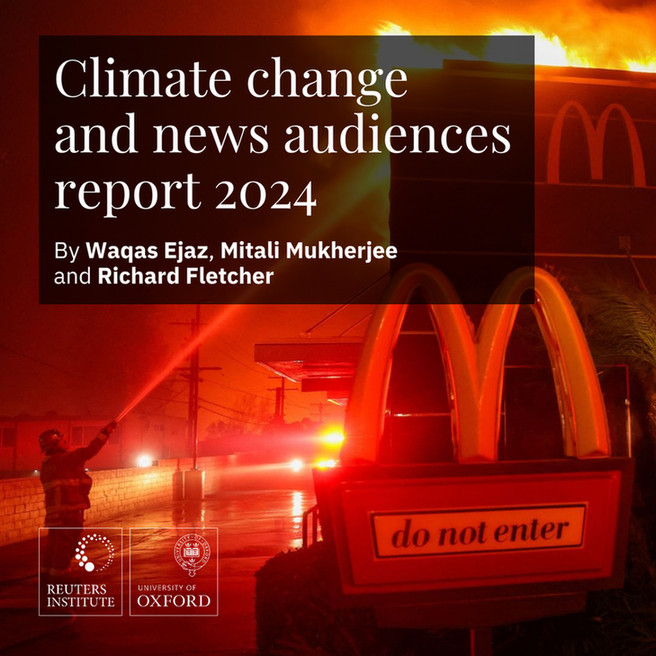How do audiences follow news on climate change?
This is the question at the heart of a report by @waqasejaz.bsky.social @mitalilive.bsky.social @richardfletcher.bsky.social based on survey data from 🇧🇷 🇫🇷 🇩🇪 🇮🇳 🇯🇵 🇵🇰 🇬🇧 🇺🇸
Read here: https://buff.ly/4jwvTNG
7 findings in thread
This is the question at the heart of a report by @waqasejaz.bsky.social @mitalilive.bsky.social @richardfletcher.bsky.social based on survey data from 🇧🇷 🇫🇷 🇩🇪 🇮🇳 🇯🇵 🇵🇰 🇬🇧 🇺🇸
Read here: https://buff.ly/4jwvTNG
7 findings in thread

Comments
Across the countries we cover, 50% follow news about climate change every week – similar to 2022. Numbers are highest in France (60%) and lowest in the US (34%) where there was a 16 point fall from 2023 against the backdrop of the presidential election
The news media continues to be the primary way people access climate change information – ahead of documentaries and social platforms. TV news (31%) and online news sites (24%) are the most widely used media. Video is people’s preferred format, ahead of text
On average, the proportion that think they see misleading information on climate change every week is 25% – with little change from 2022. The highest figures can be found in 🇮🇳 (43%), with lower figures in 🇬🇧 (17%) and 🇯🇵 (16%)
Most people in 🇧🇷 (76%) and 🇮🇳 (65%) report experiencing heatwaves, while severe floods affect more than half in 🇮🇳 (59%) and 🇵🇰 (54%). Perceptions are consistent, with 63% globally believing heatwaves are becoming more severe
People tend to have a favourable view of how the news media covers extreme weather events, especially when it comes to providing information in a timely manner, although less so when it comes to providing information about the underlying causes
Most people in every country are concerned. Numbers have remained stable in the past three years, despite increasing climate challenges. Ideology matters: In 2024, concern among those on the left peaked at 91%, dropping to 77% among those on the right